Road Trippin’
We’re still hung up with this ‘rona virus, and while it looks like it’s abating, the aftereffects are dogging us. Air travel is spotty, with entire routes cancelled. Hotels still haven’t reinstituted their perks for frequent guests, or even the complimentary breakfasts at the mid-tier level. We’re blessed that most cigar bars have kept the lights on and the humidors full. In fact, the spate of new cigar issues is encouraging, and keeps us going on particularly discouraging days. Having our wings clipped for a few months puts a dent in our quest to inform you of all things wonderful in cigars and other pleasures of the world. Like you, we’ve sat and waited this out with a mixture of patience and grace. At least, most of the time. We can say this time down, what with working at home and all, has been good for getting outside more often. Some of us are exercising more, while some are rediscovering that fresh air is a good thing. To fill in for lost travel time, we’ve outlined five outdoor places around the U.S. that you may be able to get to for some R & R, including where to get the finest smokes to make sure your relaxation is the fullest it can be. There isn’t much reason or rhyme to these places, they’re just locations we’ve been to over the years and they remain close to our hearts. Most don’t require logistical acrobatics. And in terms of making the best of things, these are places you may not normally go. But then, what’s normal anymore? There is no ‘new normal,’ that’s for sure. We loved the way things were. And they will come back. Until then…
Joshua Tree, California
Delighted by its inviting appearance, Mormon settlers coming into the Mojave Desert looked at a surreal cockeyed evergreen and recognized its likeness immediately.
It was the prophet Joshua, raising his hands to the heavens. And the Joshua Tree was born. In this case, that prophet can grow to be 40 feet tall.
The plant is a beacon to millions each year who come to California’s Joshua Tree National Park, a national monument since the 1930s and a park since 1994.
For many who come to the southwest desert, the allure is the weather, which features the bluest skies in the contiguous 48 along with air that envelops you in a warm, powdery cocoon. For others, it is the simple, gorgeous nothingness, a vast open space that encourages dreams and dreamers.
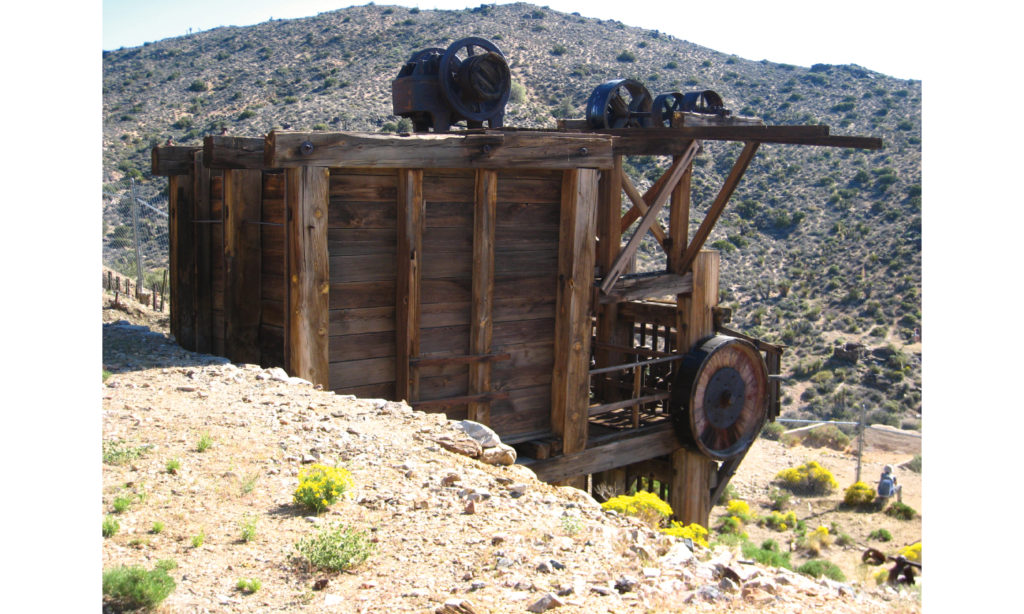
The best way into that dream is to come in from Los Angeles, as the jam-packed highway sweeps upward from LAX, around the San Bernardino Mountains and into Yucca Valley.
Before you head for the open spaces, maybe take a night to enjoy the leisure of Palm Springs and stock up. Pivat Cigar Lounge inside the Agua Caliente Resort & Casino and Fame Cigars and Wine are about 40 miles outside of Joshua Tree.
Pivat offers a triple threat – a fully stocked humidor, a theatrically staged smoked Old Fashioned, and video poker.
It’s an easy drive over to Joshua Tree from Palm Springs, and as you turn off the Interstate onto Highway 62 toward the park, Joshua Trees pock the landscape, while creosote bush scrubs, the world’s oldest living things at 11,500 years old, multiply.
By the time you get to Twentynine Palms, a military town with every convenience and a few good eateries, you’re getting acquainted with the desert.
The 200 miles of hiking trails inside the Joshua Tree National Park come in all flavors.
Some, like Keys View, are paved, short trails that give a taste of the park, with sweeping red sandstone earth and granite boulders to each side. In the middle of the quarter-mile loop, an overlook provides sweeping views of the Coachella Valley and you can see a good swath of the San Andreas Fault, the fabled ridge line that is said will someday shift much of California into the sea.
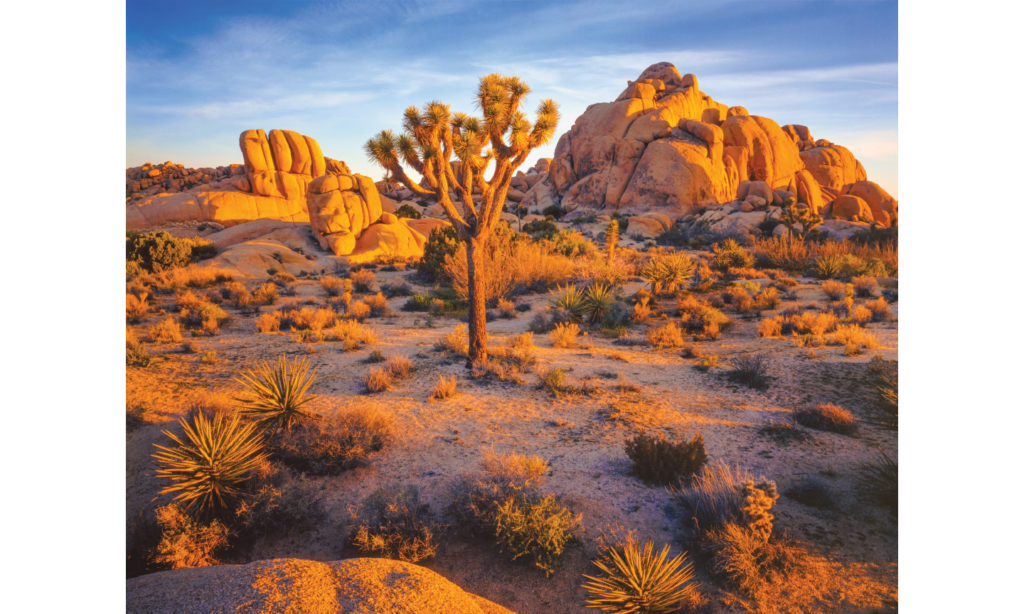
For a pensive, lost-in-your-thoughts, more challenging hike, head to the Lost Horse Mine. It’s a 6- to 7-mile loop up and down a truly dusty trail to get in there. Blacktail jackrabbits jump out of the bushes once in a while, and keep looking for the desert tortoise, said to be endangered but easy to find if you keep an eye out.
The Lost Horse Mine is a well-preserved relic. It’s jarring to see this aged wooden structure reaching into the sky in the back end of the desert, with thick, dark beams that have survived decades of elements, much heartier than our own species.
The mine went down 300 feet, and was sold for $1,000 shortly after the claim was discovered. Between 1893 and 1936, the mine yielded 10,000 ounces of gold – $20 million in today’s dollars. Someone got a good deal.
After a day hiking in the park, a night at the Joshua Tree Inn is in order. Set on the main drag of Twentynine Palms Highway in Joshua Tree, it’s a one-story hacienda-style inn six miles outside the park. The 11 rooms are each different, laid out in a horseshoe around a courtyard and a large pool.
Some of the rooms are themed – for example, there’s room 8, where singer Gram Parsons died in 1973. Next to that is the Emmylou Harris room, and there’s also the John Barrymore Suite. Hollywood, the music industry, and the desert all come together at the Joshua Tree Inn.
Before leaving the area, stop at the Joshua Tree Park’s visitor center in Twentynine Palms. Inside as you enter the teeming center filled with souvenirs
and trinkets is a mural. It is framed around Minerva Hamilton Hoyt. Shrouded in cacti and boulders, the South Pasadena socialite and conservationist was integral in launching protections for the desert, including the 800,000 acres of the Joshua Tree National Park.
The desert, she said, is a “world of strange and inexpressible beauty, of mystery and singular aloofness which is yet so filled with peace…”
It’s a place we can all use a touch of now.
Natchez Trace / Natchez, Miss – Nashville
Although the Natchez Trace Parkway was formally established in 1938, it is an antique. The fact is not so apparent as you drive the smoothas-marble road, but there are parts of this 444 miles, which extends from Natchez, Mississippi, to Nashville, Tennessee, that take you back to the 1800s, when Congress authorized the establishment of a post road on Old Natchez Trace, a trail created in the 1500s by Native American settlers.
The parkway development cut through settlements of the Choctaw and Chickasaw Nations, creating an efficient, if controversial, wide spot in the road.
Today, the parkway is downright civilized, marked with fact-filled roadside stops, and long stretches of overhanging oaks and maples, with brief histories at any stop you want to make.
Don’t get dizzy with the possibilities of so many miles. The maps will tell you that there is a historic stop every few miles and it’s true – but give yourself some existential room. Look out the window for a second, a minute or an hour. The road elicits dreams. Some folks are moving slow. Some are in a hurry to get to something they feel is important.
And regardless of your tempo, at the end of the day, relax.
Natchez, Mississippi, is set on the Mississippi River with more pre-Civil War homes than any other place in the U.S.
Walking the streets is peaceful and serene, the smell of the river mixing with the perfumed air. It’s a place to feel history.
The 100-mile drive up the Parkway to Jackson, Mississippi, leads to Hops & Habanas, with 24 beers on tap and a selection of 553 craft beers and 527 cigar brands. A couple miles away is The Country Squire, in place since 1970 and calling itself the state’s oldest tobacconist.
Fortified with some smokes and some time spent talking with our local hosts, we get back to the Parkway and about 20 miles north we pass over the Cypress Swamp, a place to get out and stretch on the clapboard walkway.
Tupelo, Mississippi, is of course best known as the birthplace of Elvis Presley, and for $8, a walk through the modest white house is worth it.
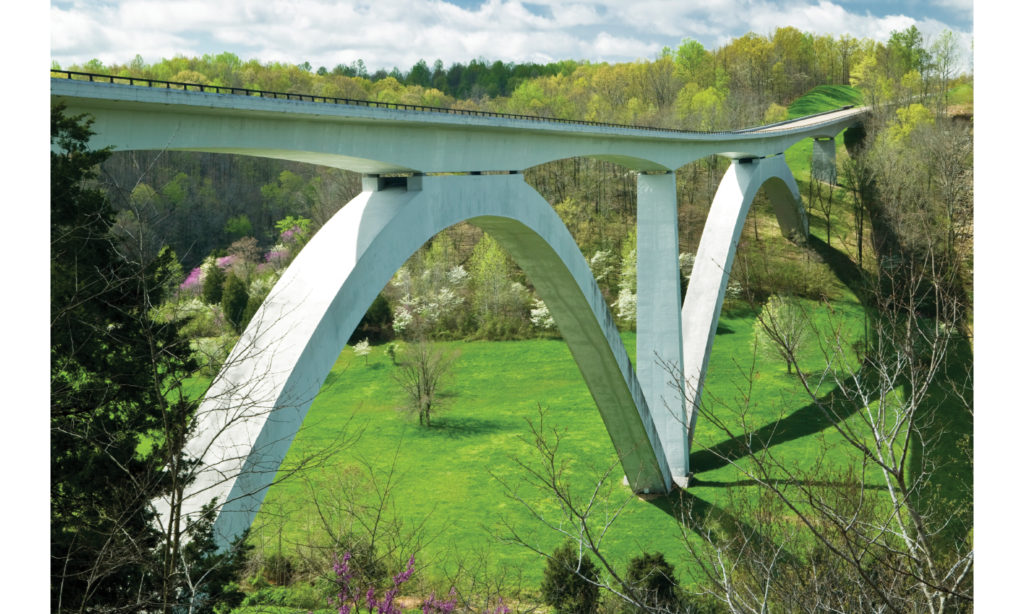
Because this is the South and because music history is near and dear, as the Parkway winds north and into Alabama, there is an historic beacon that beckons just off the beaten path, and it’s well worth it.
Muscle Shoals Studio, in Muscle Shoals, Alabama, is a gray brick shed of a space at 3614 Jackson Highway in the middle of town.
Bob Dylan recorded there in spring 1979, and loved it because he could go to the food court at the local mall and no one recognized him. Townies recall driving by the studio in 1975 and seeing Rod Stewart on the side porch, smoking.
By now Nashville and its happening cigar scene is in the headlights. One last stop, though: The weirdness of the death of Meriwether Lewis, part of the Lewis and Clark explorer duo that opened up the western part of the U.S., took place in a little cabin on the Natchez Trace trail. The cabin was part of an inn that Lewis was holed up in for the evening in October 1809.
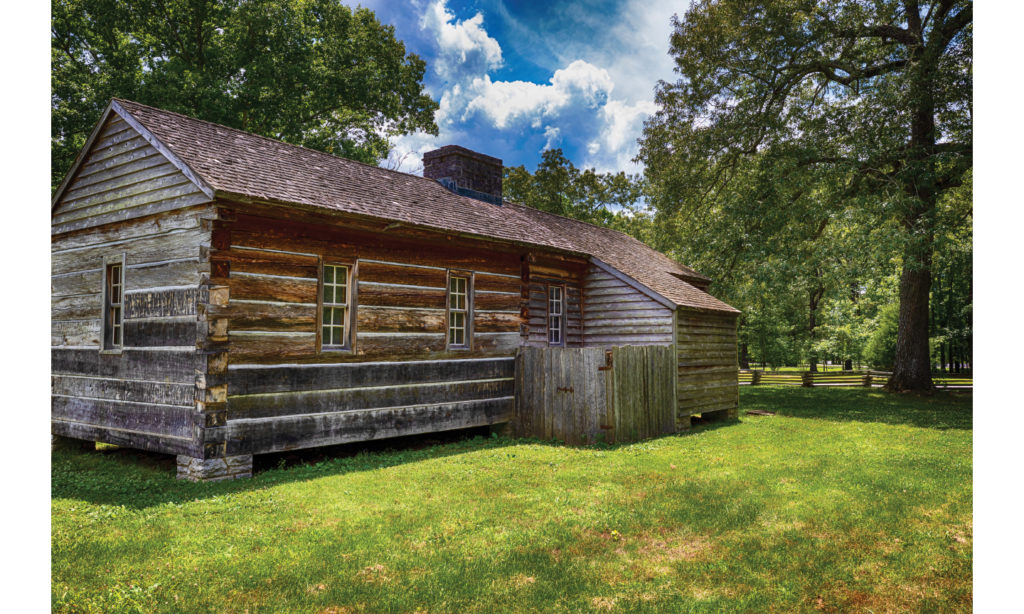
Lewis died from two gunshot wounds. Some say suicide, some say murder. No one is sure and there are plausible arguments for each cause.
Lewis is memorialized with a stone obelisk, and his remains are buried beneath. Across the lot is the cabin he was found in. To the right of that is a nice stretch of trail that burrows into the dense forest, an eight-foot wide opening that cuts through the thicket and is flanked by oaks, elms and cottonwoods.
Sixty miles later, crossing the double arch bridge that spans Birdsong Hollow, you enter Franklin, Tennessee, and Franklin Cigar, with a 3,000 fully stock humidor including a custom built Davidoff cabinet. Head north a few miles to Nashville Smoke and Ale, then dip into the downtown, a cigar sanctuary.
End the trek with a stop at The Palm, part of the small chain of premier steak houses and a traditional hobnob heaven. The food is strictly A-grade, the crab cakes, beyond.
The Cigar Lounge, where politicians and celebs used to congregate, enjoy a smoke, and cook up deals, is still there. High top tables and free flowing drinks are part of that scene.
But like the Natchez Trace Parkway, it also carries a whiff of days past.
The state banned indoor smoking in 2007.
Lake Superior / Michigan, Minnesota, Wisconsin, Ontario
The American Integrity will race you. It has an advantage, though.
The Integrity is a Great Lakes freighter, built in 1978, and on a late summer day, it heads from Sault Ste Marie, Michigan, to Silver Bay, Minnesota, cutting through the heart of Lake Superior.
You, the landlubber, are going via the Lake Superior Circle, taking in 700 miles, two countries, a province and three states.
Edge goes to the Integrity, which you can watch pass through the channel from Lake Huron into Superior at the Soo Locks, where massive ships pass through every day. Tours are offered but not necessary – just sitting and watching the boats pass is sufficient for any dreamer. The boat crew members sit on the deck and watch the watchers as the boat passes through. They’re also dreaming.
The locks cut through two Sault Ste Maries, one in the U.S., the other in Canada, separated by a bridge.
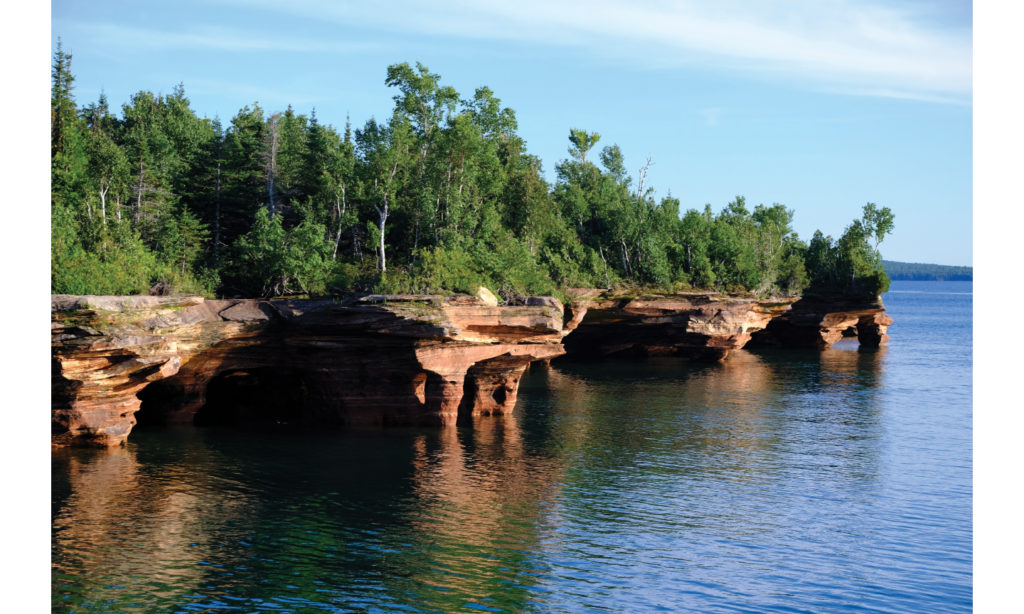
Begin this trek at Austin’s Cigar Lounge, in Sault Ste Marie, on the U.S. side, with 30 bottles of premium whiskeys and over 70 boxes of premium cigars. It’s a haul around the world’s largest freshwater lake, so stock up. And cigar lounges aren’t allowed in Ontario.
The first leg of the trip goes across the Canadian border and 260 miles up to Marathon. On the left, the sun glances off Superior while cliffs dip onto the frothy surf. On the right, small stops offer picnic spots, trails and more cliffs.
When you get out to walk, the air smells just like the north, a piney freshness that conjures thoughts of tents and coffee on the gas stove. But instead of gas stove java, hit a Tim Horton’s, which is a Canadian brand better than Starbucks. And don’t miss the apple fritter.
Small lakes dot the landscape, as the route moves back and forth from the coastline. There are postcards around every corner and it occurs that Superior is, yes, Superior. It takes up 31,700 square miles and it reaches 1,332 feet at its deepest point.
The terrain is clean and remote. You feel the space. Seeing a mother moose and her calf cross in front of your car one morning seems normal. So does that bear cub you see at the side of the back road you took to have a nature smoke break.
Relentlessly tall evergreens occasionally give way to a rise of birch trees that poke the air with no leaves. It’s the forest ecosystem at work in an area that few people go, where whipping winds from the north can strip a tree in seconds.
Onward to Grand Marais, Minnesota, also means passing through the impressively named Thunder Bay, Ontario. While the downtown is beset by a large casino taking up a chunk of prime real estate, the view of the bay from just about any point is excellent. Also fine, although lacking in ambience, is the curry chicken at the Island Spice Jerk House, a downtown Jamaican food spot. Take it to go.
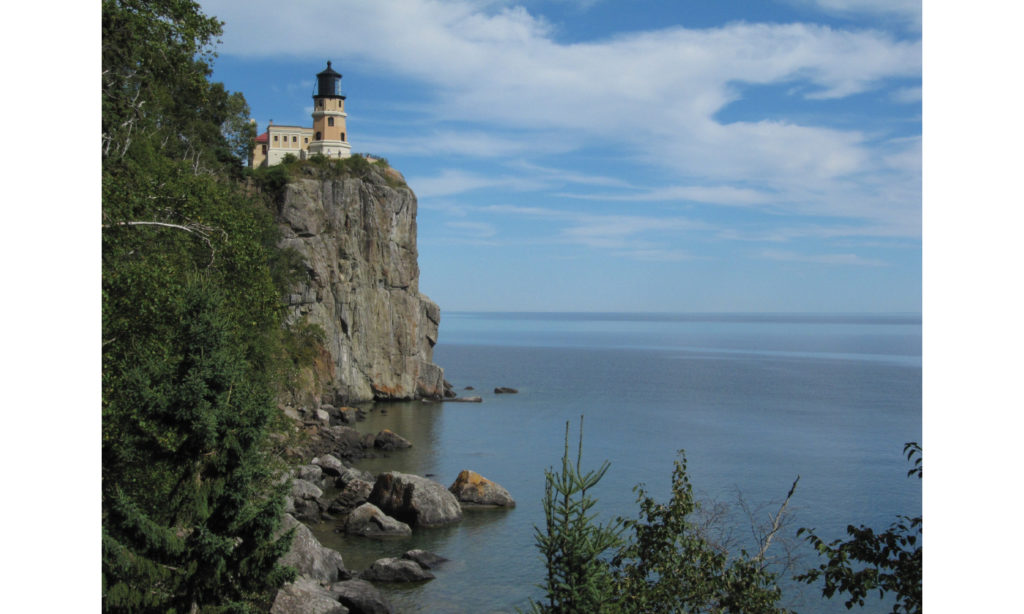
Also to go, as we noted cigar bars are outlawed in the province, are some Cuban cigars from Rollies, about 10 minutes south of the island. Sticker shock alert: Cigar tax in Ontario is 56.6 percent.
Grand Marais rolls it out for the visitors, so get a lakeside hotel room with a little deck and dig the pebbled inlets, walk the streets and talk to the tourists. It’s a place to flop in relative luxury. Most traffic through here comes during a three-month spate of sunshine and moderate temperatures.
Wrapping up the trek is Duluth, carved into a hillside with streets that all angle upwards.
The two-mile Bong Bridge connects Duluth to its sister city, Superior, Wisconsin. It spans the Saint Louis Bay, which empties into Lake Superior.
These are towns that still have Friday fish fries and locals sell pastries at the Elks Lodge and anywhere else they can. Acting on a tip from a guy at a record store, I bought pasty (rhymes with nasty), a local favorite of seasoned beef and vegetables wrapped in a dough pocket, from a darkened dessert shop two blocks off the main drag of Superior. This one was well-seasoned, the mark of a solid pasty.
Lake Superior and the towns around it have amazing power and tenacity. They withstand elements that make most of us cower, and rightfully so. In January 1996, the mercury dipped to 45 degrees below zero in Thunder Bay. Several times it has snowed for 10 straight days in Duluth.
Sitting on a warm evening looking at the glassy water, it’s hard to believe that in six months these northern reaches will be unrecognizable. Cold winds, snow and skeleton trees will be the rule, and will last deep into May.
But for now, that transformation seems a long way off. Warren Zevon’s parting advice, to “enjoy every sandwich,” makes perfect sense.
Mt. Rushmore / Black Hills / South Dakota
For pure, attraction-filled expanse, the Black Hills National Forest is among the richest you’ll find in the lower 48 of the U.S. Its 1,950 square miles span hills, mountains, valleys, prairies flanking rivers, ponds, pools, and waterfalls. It takes in parts of South Dakota and Wyoming, and mountain lions, bison, and bears call it home.
There are also towns, villages, and memorials. They are spread wide, and you’ll spend some serious road time.
So before you start, stock up your travel humidor.
In Rapid City, the only city in these wide open spaces with a population of 75,000, head over to the Tinder Box Cigar Lounge, where you can sit down for a smoke and a drink. Maybe a few, as you’ll likely want to stay overnight in the town to use it as a base for your travels.
Tinder Box carries the usual big brands, so you’ll be in good hands, and the bar has 11 mostly craft beers on tap as well as the cocktail and wine basics.
Fortified and supplied, head out.
You’re not supposed to drive here at 60 miles an hour. To do the scenery half justice, people should drive 20 or under; to do it full justice, they should get out and walk.
Peter Norbeck, former South Dakota governor
Amazingly, you can drive from one side to the other, from Buckhorn, Wyoming on the west, to Rapid City, South Dakota, on the east, in 90 minutes.
Not that you want to. South Dakota is the only state in the U.S. that did not shut down virtually everything when the COVID-19 virus was discovered.
It took heat from almost everyone, and wherever you land on that issue politically, the state has been open for business the entire time. Sure, school systems shut, and national parks closed. But the former are up and running this fall and the latter have gradually allowed visitors to most spots starting in June.
So, if you want to forget about this entirely regrettable virus debacle, South Dakota is enticing.
To get a full flavor of what the park has to offer, take the Peter Norbeck Scenic Byway. Named after a former South Dakota governor, it’s a 66-mile double loop, and be ready to take it slow. Bison roam the grounds as if they own it, because, well, they do. Every year, a few tourists get taken down by the wild bison, who predictably get pissed if you get too close to them or their calves.
The road splits at some points to accommodate a tree that was too big to be taken out. It winds and twists, and rock spires erupt before you head into stone tunnels.
To the north of the byway, there’s a road. You take it, winding north, through three stone tunnels.
And there it is, Mt. Rushmore
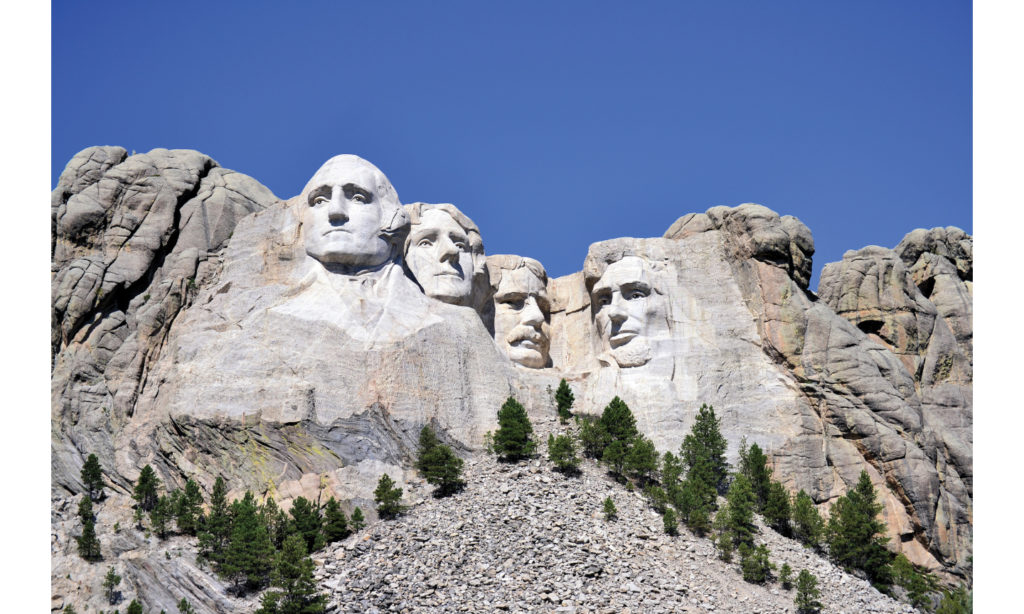
Benjamin Black Elk melted my camera at Mount Rushmore.
I was already heady with the otherworldly, 60-foot faces of George Washington, Theodore Roosevelt, Abraham Lincoln and Thomas Jefferson carved in the side of a South Dakota mountain when I pulled up in the back seat of my parents’ car.
Black Elk was a Sioux Indian dressed in traditional clothing, sitting atop a horse in the parking lot. He was an iconic figure at the park who was representing his tribe and the Indian heritage of the region. For years, he dutifully showed up astride his Appaloosa and talked with the tourists.
Seeing him was like seeing a movie star, and it caused me to go all paparazzi. I grabbed my tiny plastic camera and snapped, unaware that there was a procedure in place for such a thing.
For example, ask politely.
“Your picture will not turn out,” Black Elk said to me, glaring down from his steed with a frown.
Whatever. I was 8 years old, so sue me.
I stuck the camera in the car and my parents and I checked out the monument.
What a fantastic thing to see in the middle of all this piney wilderness. The longer you look at this sculpture, completed by Idaho-born sculptor Gutzon Borglum in 1941, the odder it seems. Its magnificence is enhanced by thoughts of the logistics – Borglum and his crew of 400 dynamited and drilled 410,000 tons of granite off the 5,700-foot mountain. The workers took trams up and down the mountain while completing the project. None of them died. And yes, some of them had to dangle on bosun chairs – similar to what we see window washers using today – while detailing the famous faces.
Over the years, various buildings have been added to the park, including a museum, a terrace and a trail. Today, two million people a year come to Mount Rushmore. They wield binoculars and cameras and a sense of history, time and place.
The Rushmore park experience starts at the Sculptor’s Studio, where Borglum kept his plaster models for the etching. In the studio, you get a talk from a ranger historian and a 15-minute movie on the carving. From there, walk on up to the Presidential Trail to examine the visages.
In the evening, the faces are lit up; the park is open to 11 p.m., and it’s worth taking the time to see that.
And Black Elk?
That day, after we returned from a full exploration of the monument, I found my camera. I had left it in the back window of the car. It was melted by the sun.
Black Elk was right.
Table Rock / Greenville, South Carolina
The second best thing about hiking Table Rock Trail – which comes after the invigorating hike itself – is the drive out there.
The road time gives you some room to enjoy the loot you’ve acquired from an evening or two at the Cigar Experience Lounge or Outman Cigars & Martini Bar in Greenville.
The ride is 45 minutes of meadowed hills that roll among thick groves of trees, topped with some rocky mountain cropping. Pull up to Pumpkintown, a one-light burg five miles outside of Table Rock State Park.
Time a visit to autumn and you can check out fields that are jammed with these jack-olanterns. Time it to another season and it’s still a fine place to grab some chow at the Pumpkintown General Store. Expect basic, wellprepared, heart stopper breakfasts – biscuits, gravy, sausage, tons of toast, lots of eggs. For lunch, grab a couple chili dogs and fries, and why not? You’re headed for a 3,400-foot climb. The food is fortifying and mortifying at the same time, but also delicious.
When you pull into the Table Rock parking lot, you’ll see cars and people running all over and if you’re like me, you’ll want to turn around and find something less accessible, less popular and more solitary.
The visitor’s center puts out a sign-in sheet to track hikers who might get lost, become bear bait or find other misadventure. Be sure to sign out, or they’ll send someone looking for you.
But Table Rock Trail – part of the Pisgah National Forest and bordering the Linville Gorge Wilderness – is good for cutting out the dabblers, once you get into it about a half-mile, which is the make-or-break point. Besides, you know something good might be up ahead when the visitor’s center puts out a sign-in sheet in case you don’t make it back.
They’ll send someone looking for you, fearing you’ve become bear bait, gotten lost or otherwise encountered a misadventure, so be hemlocks.
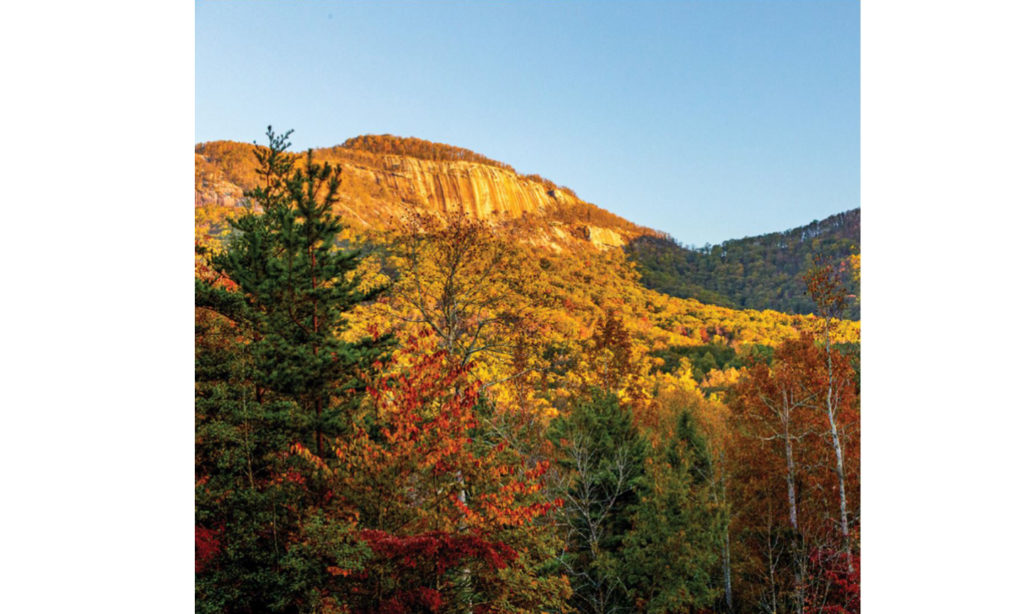
This is the warm up, though, as you move upward to get to the heart of the real hiking as you follow tributaries of the Linville River and the gorge.
The scramble upwards and into the upper reaches of the trail, though, is where things get real. The wet climate and the waterfalls make the rocks on the trail a slippery slide and so as you enjoy and appreciate the increasing difficulty of the walk, be aware: You may slip and fall. No matter, things get intense as you go up 2,000 feet in 3.6 miles on the way to the top.
Around two miles up, there’s a little shelter. Time for a smoke and a look at the expansive view. Depending on the season, you’re going to take in some intoxicating autumn colors, some stark seen it, so make sure you encourage some folks going up who might be wearing out.
By the time you get down, you’ve taken in one of the great hikes of South Carolina. Driving back to Greenville, don’t get ahead of yourself with plans for the evening. Ever notice how we sometimes experience new things, especially something out of the ordinary, and then forget what it felt like at the time? This is the opportunity to savor the walk, and store it for later, when you need it.
When you get back to town, head to the Cigar Boxx. With a small humidor and a bar with a selection of over 200 single malt scotches and 100 bourbons, it’s a good stop to continue the savoring. And then ask yourself the inevitable question: What’s next?




